We are reader-supported. Buying through any red colored link on our site may earn us commissions. Learn More.
Up to 30% off engagement rings and select jewelry at James Allen!
Hearts and Arrows diamonds are precisely cut round brilliant diamonds that have a unique visual pattern resembling hearts and arrows when viewed through specialized tools. The 8 “hearts” are seen from the pavilion view (bottom-up), while the 8 “arrows” are observed from the crown view (top-down). This unique pattern is a result of exceptional symmetry and proportions in the diamond’s cut. When considering a Hearts and Arrows diamond, verify the cut quality through reputable certifications and ideally see the visual pattern yourself through a viewer designed for this purpose.
In terms of budget, Hearts and Arrows diamonds tend to be on the higher end of the price spectrum due to their meticulous craftsmanship. Prices can vary widely based on other factors such as carat weight, clarity, and color, but you should expect to pay a premium for this specific cut quality, generally in the 20%-25% range. While not everyone may notice the nuanced difference in everyday lighting conditions, connoisseurs who appreciate fine details often seek out these diamonds for their unparalleled optical performance.
These super-ideal cut diamonds can really stand out, but in some cases may not be worth the extra money. Knowing what to look for and what to avoid is the key if you’re in in the market for some extra brilliance.
Bottom Line Recommendation:
Take a look at this diamond from Blue Nile. This is an absolute stunner of a hearts and arrows diamond. There is no question that this diamond is as brilliant as you can get. Now take a look at this diamond also from Blue Nile. It’s definitely a nice diamond. There are some minor cut issues which will make it slightly less brilliant than the previous diamond. Is that worth the price difference? That is what we will discuss in this article.
Pros of H&A Diamonds
Cons of H&A Diamonds
Why you should trust us
Hearts & Arrows Diamonds
Hearts & Arrows diamonds are meticulously cut diamonds, most often in the round cut shape. If you look at enough diamonds, you’ll start to notice some interesting reflective patterns. Take a look at these three diamonds.
1) 0.71ct F VS1 Astor Ideal cut on Blue Nile
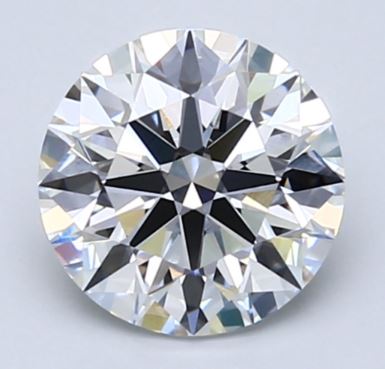
2) 0.78ct I VS2 Excellent cut on James Allen (with well defined arrows)
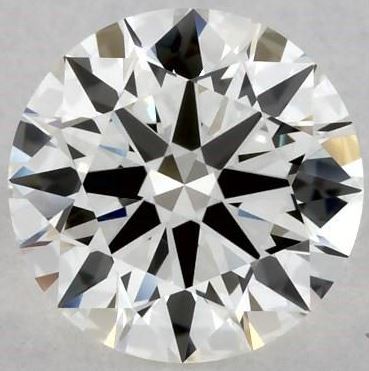
3) 0.80ct J VS1 Excellent cut on James Allen (without well defined arrows) ~a poorly cut diamond~
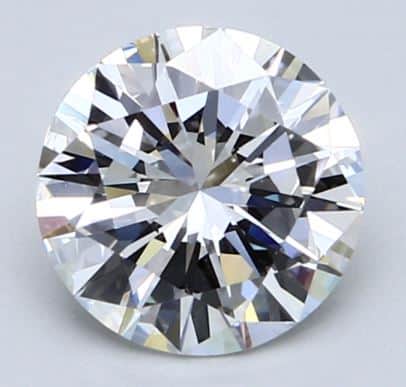
In the first two, you can see a consistent starburst pattern of arrows. This is the hallmark of a well-cut round diamond. What you are seeing is the reflection of the crown of the diamond through the table facet. In the third diamond, you can tell from the video that the depth and crown angle are off just by seeing the lack of an arrow pattern.
As explained in this diamond industry expert interview by the GIA, in 1986, someone in Japan developed a device called the Firescope viewer that, when looking at a diamond inverted, reveals hearts in between each of those arrows on the starburst. This is where the concept of Hearts & Arrows was born. Years later, more advanced devices allowed for even more precise viewing and cutting of these exceptionally precise diamonds.
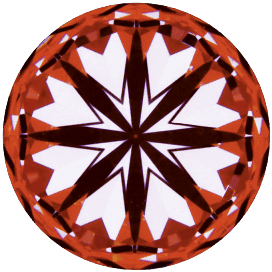
And how do you know you’re getting such a diamond? Apart from a photo, you need to look into the paperwork.
Reading about cut dimensions, proportions and grades is similar to reading the technical specs on a car. The bottom line is that most people don’t care about specific specs only focusing on the results. 99% of the people don’t care how much torque a car has. They just want to know that the car will accelerate to their satisfaction.
The same is true of diamonds. People don’t care how a 34.5 degree crown angle pairs with a 56% table. They just want to know that the diamond has fire and brilliance (put even more simply, that is sparkles). Take this stunning 1 carat diamond from Blue Nile’s Astor Collection for example. I can wax poetically about how great the 33.0 crown angle is for this diamond. Bottom line is the diamond is gorgeous.
You can easily look at a diamond and tell whether there is a noticeable yellow hue, or whether there is a garish inclusion. Brilliance though? That’s a tougher nut to crack. Sure, you can notice if a diamond has spectacular brilliance or if its completely dead. But there is a wide range in between.
This is challenging to deal with, because cut quality has an incredible impact on a diamond’s beauty and presence, including how large it appears once it’s set in an engagement ring.
”A well-cut diamond will have more life and sparkle than one with a lesser cut quality.” “If you compare a well-cut small diamond side by side with a slightly larger diamond of lesser cut quality, the smaller diamond may look larger to the naked eye.” American Gem Society (AGS)
GIA (with their sliding scale grading based on the different proportions) and AGS (with their light performance grades) have made great strides in the last ten years. If you pick out a diamond with a GIA excellent cut grade or an AGS 0 grade, it’s a safe bet that the diamond has adequate brilliance. But that isn’t enough for everyone. Some people are looking for more. That “more” they usually turn to is “Hearts and Arrows” – sometimes referred to as “super ideal.”
Hearts and Arrows Diamonds – How Are They Special?
Hearts and Arrows diamonds are special because they’re cut with high precision and exceptional craftsmanship. They’re taken from more rough material than other diamonds, making them more expensive and time-consuming to produce.

Here are the main benefits of Hearts and Arrows diamonds:
- Craftsmanship: A diamond’s facets must be aligned in three dimensions for it to show a distinct Hearts and Arrows pattern. This precision can only be achieved by an expert diamond cutter who’s skilled and meticulous.
- Light performance: The precise facet alignment forms a series of tiny mirrors that refract and reflect light back to your eyes. This helps the diamond have tremendous brilliance.
- Optimal symmetry: Hearts and Arrows diamonds are aligned in three dimensions, giving them excellent symmetry. This differs from traditional symmetry listed on a lab report, but it helps maximize light reflection.
- Uniqueness: Most diamonds don’t have an intricate pattern of arrows and hearts. A Hearts and Arrows diamond gives you a special diamond with a distinct character.
Why Are Hearts and Arrows So Expensive?
A diamond with exceptional qualities is always going to come with a higher price tag to match.
In the case of Hearts and Arrows diamonds, they are created with a higher level of care, attention and craftsmanship than your average diamond, so it stands to reason that you’ll need to pay more.
These diamonds are also cut from more raw material, which again goes into the price and results in a higher cost for Hearts and Arrows over a regular diamond.
Do Hearts and Arrows Diamonds Appear Larger Than Non-Ideal Cut Diamonds?
Yes, Hearts and Arrows diamonds look larger than non-ideal cut round diamonds. They look bigger because they provide more brightness and brilliance across the diamond. The optical precision and symmetry allows light to interact better with the diamond’s facets. When you look at a non-ideal diamond—especially from afar—the darker middle and edges make it appear smaller. The increased light return causes a Hearts and Arrows diamond to seem more vivid—and therefore larger.
Hearts and Arrows Brilliance
The term brilliance is thrown around a lot in relation to diamonds, especially when we’re discussing its cut. Brilliance refers to the amount of white light that gets reflected back out from the diamond.
Diamonds with a high level of brilliance are almost always more desirable, as this is one aspect that gives the diamond its signature “sparkle”.
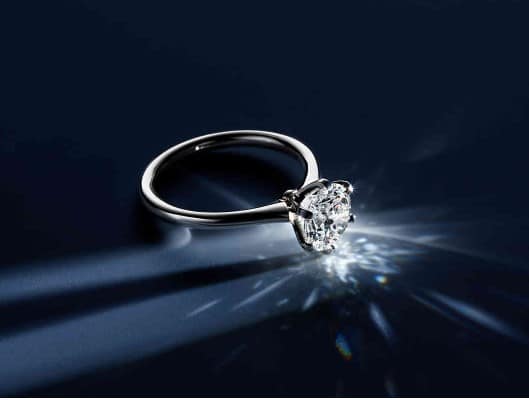
It’s pretty safe to say that there is a strong correlation between a diamond that exhibits hearts & arrows and a diamond that performs well in brilliance. This is not a bulletproof distinction that helps you determine if a diamond is brilliant.
There are occasions where a diamond is superbly cut and is very brilliant, yet some of the hearts or arrows are subpar. Ultimately the diamond specs are the best way to analyze a diamond to determine how consistently brilliant (in all lighting scenarios) a diamond will be.
Hearts and Arrows Cause and Effect
You can expect Hearts and Arrows diamonds to be extremely well-proportioned, symmetrical, and in most cases exhibit a large amount of fire and brilliance.
It’s imperative for people to understand, however, that hearts & arrows do not cause a diamond to be brilliant. They are an effect of a perfectly proportioned round cut diamond. In some ways, it’s a side effect. Diamond cutters cut the diamond to specific dimensions in order to maximize brilliance. Those same characteristics also cause the aforementioned hearts & arrows in the classical round cut diamond.
Unfortunately, many companies develop gimmick modified cuts (rounds, or other shapes) where they manipulate the faceting of the diamond in order to have the same hearts & arrows effect. But, as I explained, the actual hearts and arrows are not what makes the diamond brilliant, its the perfectly brilliant cut that makes the hearts and arrows. For these branded cuts, hearts and arrows give you no indication whether the diamond is brilliant or not.
The main goal for most of these companies is not to provide a better cut, more brilliant diamond for the consumer. Their main priorities are to develop a gimmick (that gives them a unique marketing tool) and the ability to patent the cut (so you can’t go elsewhere, which lets them keep the price high). There are notable exceptions. I happen to love Brian Gavin’s Hearts and Arrows Cushion. But for the most part we recommend avoiding these products.
4 Tips for Finding a True “Hearts and Arrows” Diamond
There are plenty of Hearts and Arrows diamonds on the market, but they’re not all equal. Some vendors may try and trick you into a diamond that’s not truly a Hearts and Arrows diamond.
To ensure you’re getting a genuine Hearts and Arrows diamond and one with optimal light performance, follow these 5 expert tips.
1. Look for good optical symmetry
The beauty and light performance of Hearts and Arrows diamonds comes from the incredible optical symmetry. When looking at the diamond, ensure that the hearts and v-tips are symmetrical. One side of a heart and the v-tip should be mirror images of each other. The v-shape patterns at the bottoms of the hearts should also be symmetrical.
2. Count eight hearts and eight arrows
A true Hearts and Arrows diamond has exactly eight regularly shaped arrows and eight regularly shaped hearts. The shape designs—such as all the hearts—should be nearly identical to one another. Also, a single heart or arrow shouldn’t be more prominent than another.
3. Watch for alignment
The points of the arrows should align with the shafts around the hearts. The arrows’ heads and shafts should align as well. The tips of the arrows should form a uniform center. And the gaps between the hearts and v-shapes at the bottom should be equal.
4. Aim for unity
No diamond is perfect, and Hearts and Arrows diamonds aren’t any different. Rather than try to find a flawless diamond, focus on finding a diamond that looks great as a whole. It should be symmetrical, aligned and feature the hearts and arrows. Minor variations and defects will be present, and that’s OK. The goal is to find a Hearts and Arrows diamond that’s well-cut and has beautiful light performance. This stunning 1.02 Carat Round Cut from James Allen is an example of a gorgeous Hearts and Arrows diamond.
Hearts & Arrows and Branding
This fairly simple way to look at a diamond has attracted many companies to the idea of utilizing it for their brands. Unfortunately, those brands run the gamut from superbly cut to downright dubious. On the one hand you have the industry leaders when it comes to cut like Hearts on Fire and Blue Nile Astor. On the other hand, you can have some pretty poor claims of brilliance like the EGL Hearts and Arrows certificate.
Almost every company out there has a distinctive selection of “perfectly cut” diamonds. In my opinion, the overwhelming majority of these brands don’t live up to their brilliance hype. With rare exceptions, I don’t find these brands to be consistently or noticeably more brilliant than a typical excellent cut we select using our cut standards.
One exception we have found are Blue Nile’s Astor cut selection. Many of our readers have gravitated towards these diamonds and have been over the moon with their fire and brilliance. Over the last year, we have directed readers expressing interest in perfectly cut diamonds in Astor’s direction, and they have not disappointed.
Need Help Buying Hearts & Arrows Diamonds?
Evaluating diamonds takes time, practice, and knowing what to look for. If you’re unsure if a Hearts and Arrows diamond—or any diamond for that matter—is a good value, reach out to us. We’re happy to look at any diamonds and let you know our opinions.
Because diamonds are a larger buy, we want readers to end up with something stunning. We’ll help you avoid vendors who are using marketing gimmicks to try and get you to buy a less than ideal diamond.
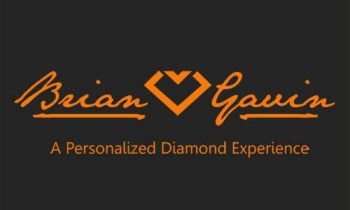
- Unsurpassed brilliance
- Offer custom cut diamonds
- Impressive collection of designer engagement rings
- Excellent personalized customer service
- Fifth generation diamond cutter

Still afraid of getting ripped off?
Before you buy a diamond, get personal buying advice from industry veterans. We'll help you get the best diamond for the money.
Ask your diamond purchase question here
DISCLAIMER: We don't use your email for marketing. Period.
You Might Like
Diamond Prices: A Complete Guide
A diamonds’ price is determined primarily by the 4 Cs of the diamond. On the wholesale level, diamond prices are first based on a diamond shape and
The Best Places to Buy Engagement Rings
Buying an engagement ring is often one of the first major purchases in a person's life. The process can be fraught with tension as there are so m
1 Carat Diamond Price & Buying Guide
A wide range of 1 carat diamonds exist both in online markets and local diamond jewelry stores. Not only are there significant differences in beauty



